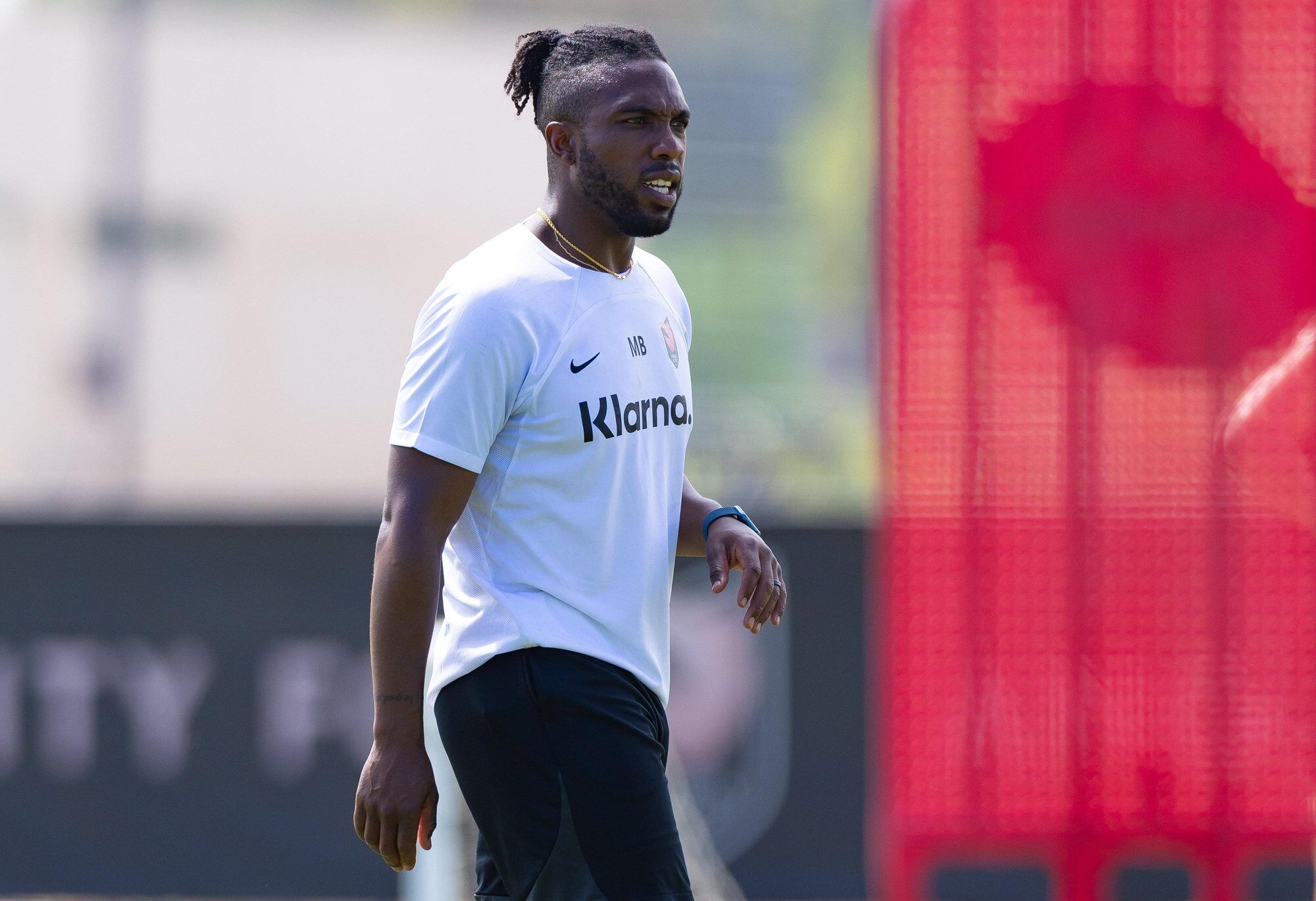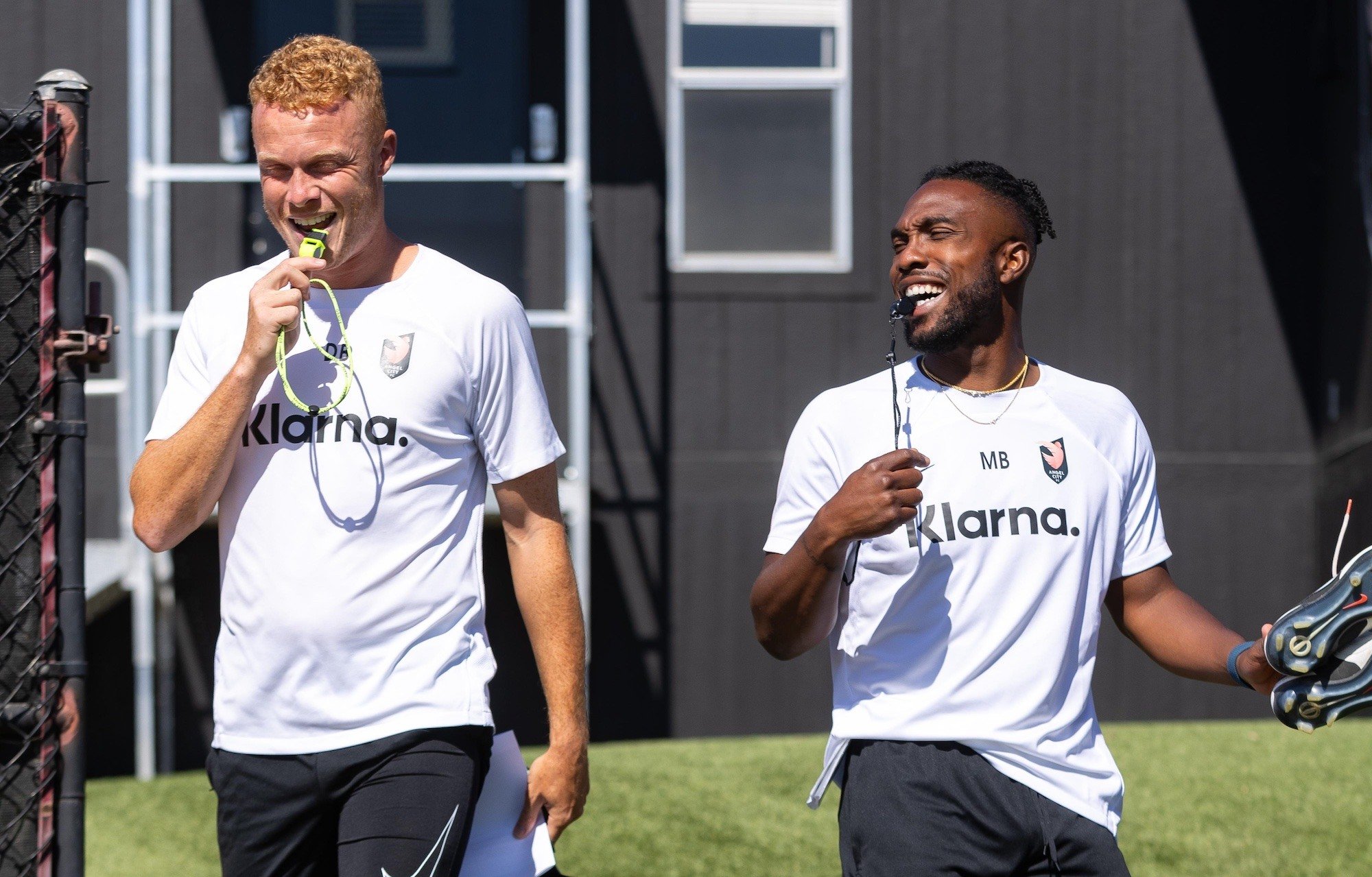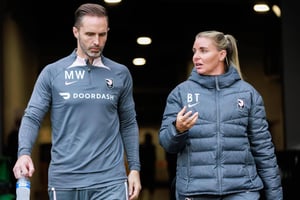LOS ANGELES (May 14, 2024) - Angel City Football Club (ACFC) today announced the hiring of Mark...
Building Technique Rep by Rep with Technical Assistant Coach Mykell Bates

Soccer, like all team sports, can be analyzed at multiple levels.
Looking at the big picture, there’s the tactical level: the team’s formation, the way their press works, what areas of the field they try to capitalize on in the attack.
Getting those things right requires zooming in and giving instructions to individual players: when to press, who to mark, which teammates to look to connect with.
Zooming in even closer, each player has to be able to physically perform the actions necessary for carrying out those instructions: passing, dribbling, tackling, crossing, shooting, and so on.
That last area is what Technical Assistant Coach Mykell Bates, who was hired this month, specializes in. He helps players sharpen what they’re already doing in games, as well as expanding their skill sets to give them more options on the field.
“So if you're a striker and your expectation is to score, we work rep by rep by rep on different ways of finishing—inside the foot, laces, volleys,” he says. “If you're a wide player and the expectation is for crosses, we work on different types of crosses.”
The goal of that technical work is to make players as effective as possible at whatever the team’s tactical plan requires of their position.
“We might think about, how is the team dangerous?” he says. “Say we're dangerous off of one-v-ones in the wide channels. Then I look at, how is our winger facing up on the dribble? How is she beating defenders? Is it through setting the defender up? Is it the first touch? Getting in behind and going? And then I look at what skills are lagging behind, or what she can be better at.”
He also aims to expand players’ skill sets to give them different options in whatever situation they find themselves in.
“Say the defender cuts a certain space off,” he explains. “What are the adjustments? We have to make sure the attacker can both see and execute those adjustments.”
Looking at where each player needs to improve, Bates comes up with a development plan. “You've got to work backwards,” he says. The first step is always recognizing what situations the player is in the majority of the time and what the game calls for.
“So say we’re working on a whipped early cross—a touch, hit type of thing where you're trying to whip it behind the back line,” says Bates. First, the player needs to be able to judge when the opposing back line and their own teammates are in the right positions for that to be the best option.
“Then, what action comes from those situations?” he continues. “With a cross, you receive the ball, take a touch, and hit it, or maybe you beat a player higher on the field, and then it's touch, hit. So those are the reps that we keep practicing and practicing.”
Depending on where the player is to start with, Bates will work on those actions at different levels of difficulty. “If as the action happens, they’re not getting the technical side right,” he explains, “we break it down finer to where they’re not taking a player on—we’ll start with a still ball and work on keeping their toe up, contacting the ball with the correct part of the foot, getting that muscle memory. Once there’s muscle memory, then we go back to the actual game situation.”

Bates, who grew up in Roseville, near Sacramento, was an elite player himself—he played college ball at Santa Clara and went to the 2007 U-17 World Cup in South Korea—and ironically, he says this kind of fine-tuning didn’t interest him when he was playing.
“I actually absolutely hated it,” he says. “I was a more athletic player, so the technical piece was a side that I felt I wasn't good at.”
He says as he got older, he learned to appreciate the importance of good technique. “When I got into coaching,” he continues, “I made sure that players know they need to be able to do these finer details so they can move up the ladder.”
Bates’s experience at the U-17 World Cup, which he calls one of the best moments of his life, gave him a new perspective on the state of the development system in the US. “I realized that the youth side of things in the US was so far behind,” he says. “That’s where I started to think, ‘how could I make a difference?’”
After college—and a seven-month stint selling ad space for Yelp, which made him realize he had to stay involved in the game—Bates got a coaching job at Mountain View Los Altos Soccer Club in the Bay Area. “MVLA became my home,” he says. He credits MVLA Technical Director Albertin Montoya, who hired him, with giving him his start as a coach. “To this day, I think he’s the best coach that I've ever witnessed, and I learned a lot from him.”
Bates found a love of coaching, especially when it comes to watching players improve. “The reason I really appreciate the individual work is watchin the progression of players,” he says. “There's progression from week to week, and especially from week one to week eight. For me, that’s gold. So the development side, and coming from the youth side, helped me get into this spot.”
Having been a high-level player for most of his life, Bates says the coach-athlete relationship comes naturally in some respects, but not others. “I feel I’m somebody who comes in with good energy. I love those interactions from athlete to athlete,” he says. “But ironically, on the flip side, something that’s more of a challenge than I thought it would be is getting to know individuals, especially hopping in mid-season.”
In his first weeks on the job, Bates has been sitting down with players one-on-one and walking them through his approach and how he aims to help them grow. To some extent, in his new job, he feels “uncomfortable,” he says, “but I actually see that as a good thing.” After all, growth only happens when you’re challenged.
.png?width=75&height=114&name=ACFC_Crest_Primary_Sol%20Rosa%20(1).png)


